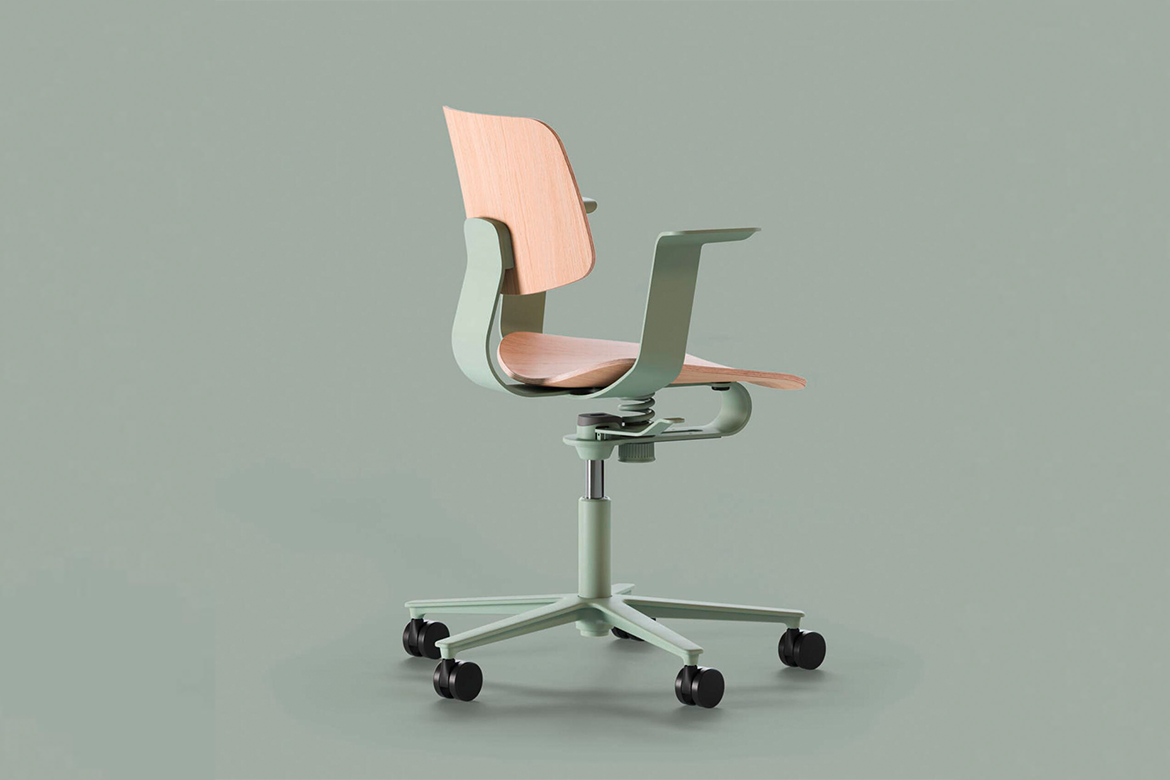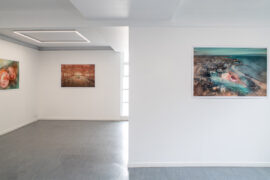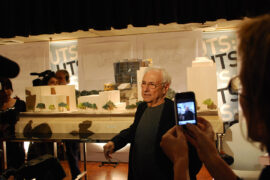It’s comfortable, it moves with you like a second skin, and it sports a cool look and friendly vibe. Wilkhahn’s IN chair is like a pair of designer sneakers. And it’s not just a visual effect.
Wilkhahn’s IN chair raised the bar for flexible office task chairs when it was launched in 2015. It features Wilkhahn’s patented Trimension technology that allows forward and backward tilts as well as rotational movement, enabling it to move with you like second skin as you change your posture throughout the day.
Don’t take it from us; the Centre of Health at the German Sports University Cologne says the IN chair reaches a dynamic state in a neutral way. The chair uses the principles of how the body is made: hip joint, knee joint and swinging arms. And Wilkhahn took things up a notch at Orgatec last year by debuting IN with a white through-dyed seat and a back element.
“The white one offers a more fresh, sports-like look – like sneakers. It’s more colourful and friendly,” comments Michael Englisch, designer of IN and Head of Design & Development at wiege design studio. He adds, “Rather than signalling ‘be careful’, ‘pay attention’, as though it belongs in a medical treatment space, it signals wellbeing, activity and dynamics. It says, ‘No, I’m not a machine’.”
The chair looks distinctly athletic with visual cues like broad ‘shoulders’ and a small ‘waist’ that merges fluidly with the shape of the seat shell. This cool sporty look is not just a visual effect – it came from technologies that really are applied in sportswear and sports cars.
The surface of IN’s backrest is made of a form-fit knit called 3D Formstrick – a technology used in developing trainers in order to integrate different strengths and thicknesses into the material directly. Its seat shell and back are connected with the rest of the chair via joints to help the body maintain its centre of gravity. This shell is made as one single piece using two-component technology from the automotive industry.
“The core idea was to integrate different functionalities into the one element,” says Englisch. He elaborates on the chair’s innovative shell: “In the cockpit of a car, you need a more soft material but the surface has to be high quality. In the past, you covered it. Now you can do it in one step and with this technology, you can implement the fibreglass reinforcement where you need it, and flexibility where you need it.”
This innovative technology has streamlined the production process and reduced parts and costs for the chair’s production, and therefore enables Wilkhahn to offer the chair at a reasonable price point. Says Englisch, “We profit from the same technology as the automobile industry. It’s a high-end technology, and this is the first time it’s been used in the office furniture industry.”
INDESIGN is on instagram
Follow @indesignlive
A searchable and comprehensive guide for specifying leading products and their suppliers
Keep up to date with the latest and greatest from our industry BFF's!

For a closer look behind the creative process, watch this video interview with Sebastian Nash, where he explores the making of King Living’s textile range – from fibre choices to design intent.

At the Munarra Centre for Regional Excellence on Yorta Yorta Country in Victoria, ARM Architecture and Milliken use PrintWorks™ technology to translate First Nations narratives into a layered, community-led floorscape.

For those who appreciate form as much as function, Gaggenau’s latest induction innovation delivers sculpted precision and effortless flexibility, disappearing seamlessly into the surface when not in use.

Merging two hotel identities in one landmark development, Hotel Indigo and Holiday Inn Little Collins capture the spirit of Melbourne through Buchan’s narrative-driven design – elevated by GROHE’s signature craftsmanship.

True sustainability doesn’t have to be complicated. As Wilkhahn demonstrate with their newest commercial furniture range.

In Australia alone, 6.4 per cent of all waste generated comes from furniture and furnishings. In this article, we review today’s most impactful Whole Of Lifecycle Furniture practices.
The internet never sleeps! Here's the stuff you might have missed

A research exhibition reimagines St Kilda’s civic spaces through soft infrastructures that enhance wellbeing and urban experience.

We republish an article in memory of the late architect by UTS, whose Dr Chau Chak Wing Building was Gehry’s first built project in Australia. The internationally revered architect passed away on 5th December.